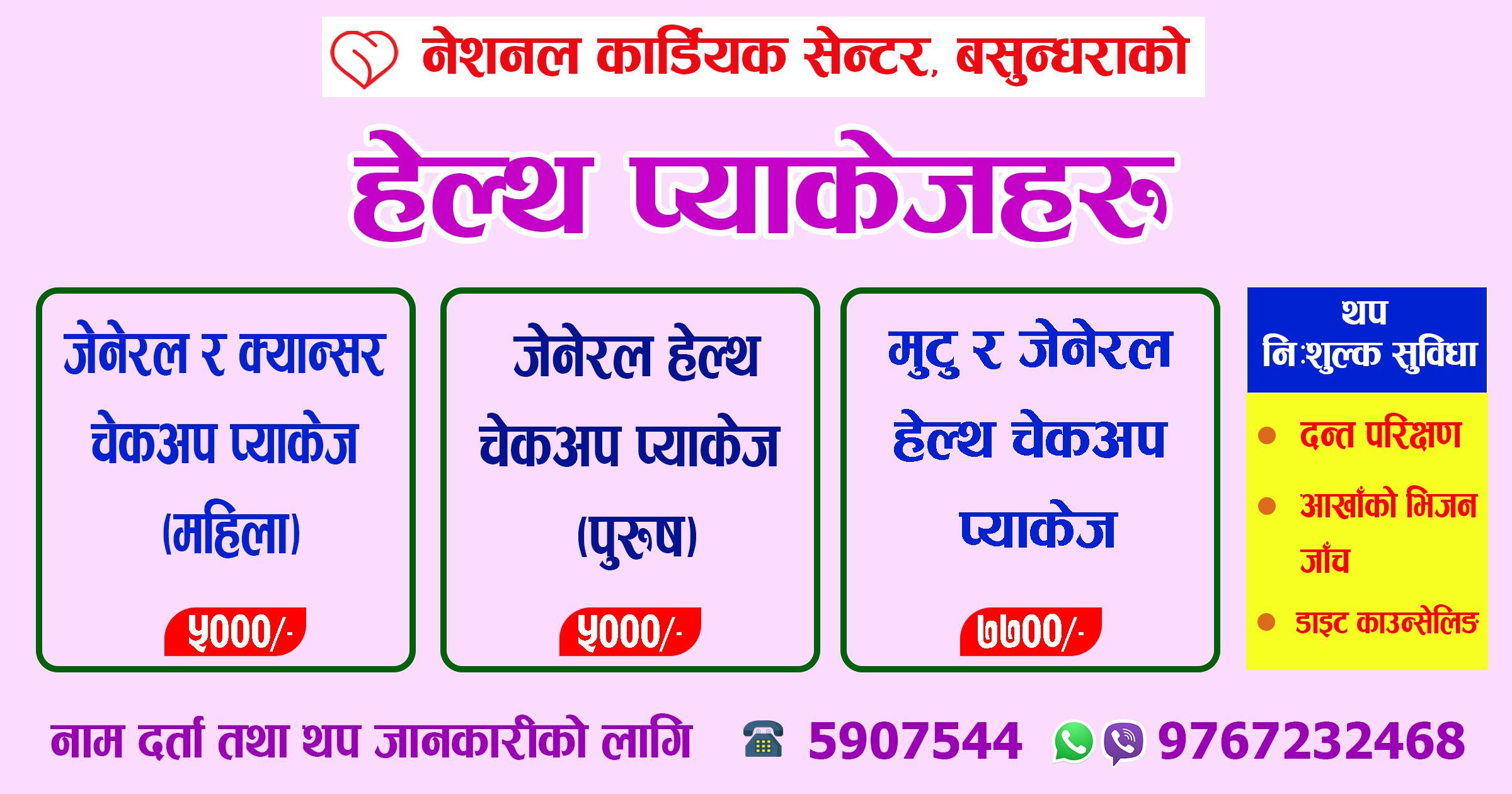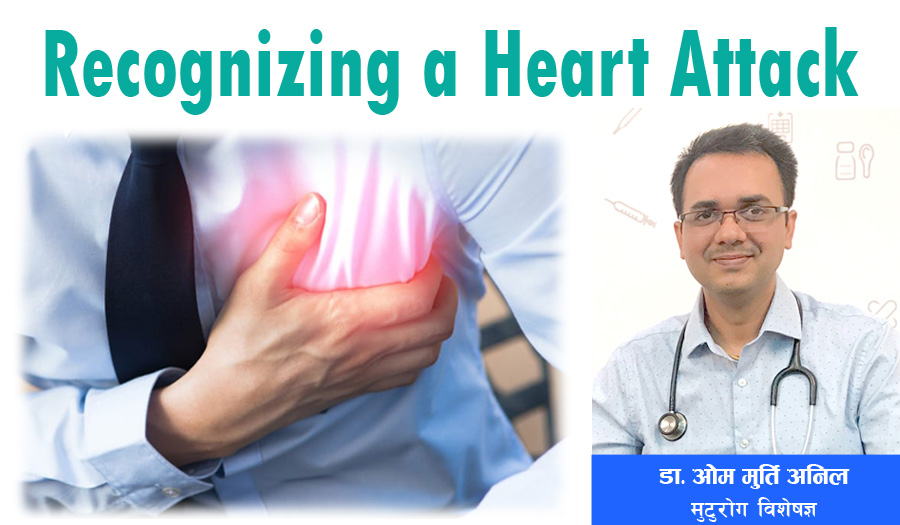

Dr. Om Murti Anil, National Cardiac Centre, Senior Cardiologist
Click here to download mobile App
Introduction
Heart attack known as Acute Coronary Syndrome / Myocardial Infarction is one of the leading causes of death.
Though chest pain is the most common symptoms of heart attack, most of the patients don’t recognize the symptoms of heart attack and just mistake these as heart burn, gastritis or indigestion and do not seek medical attention on time, this may lead to the delayed diagnosis and management of the heart attack, and death of the patient. Heart attack symptoms if recognized early, diagnosed early and treated early, many patients of heart attack can be saved.
Who are at the risk of getting heart attack?
Diabetes, hypertension, dyslipidemia, obesity, family history of heart attack, smoking, obesity, male increasing age (male more than 45 years, female > 55 years) all increase the risk of heart attack. But patient without any of these risk factors may also suffer from heart attack so if any patient has severe central chest pain, one has to suspect heart attack as one of the possibilities.
How to recognize heart attack?
Most of the time patients with heart attack have severe central chest pain radiating to the neck, jaws, arms. Sometimes heart attack may just present as difficulty in breathing, indigestion, heart burn. Early detection of heart attack and treatment of the heart attack by coronary angioplasty to maintain the flow in the blocked coronary artery is the main treatment of heart attack. The symptoms of heart attack can vary from person to person. Some people will have only mild pain or discomfort.
डा. ओम मूर्ति अनिलका भिडियो र लेखहरु हेर्न यहाँ लिंकमा वा माथिको फोटो क्लिक गर्नुस ।
While others have sudden onset of very severe pain at the center of chest which may be squeezing type of pain, crushing type of pain or just fullness / heaviness. Patient may also feel pain or discomfort in the neck, jaws, one or both arms, upper abdomen. Most of the times heart attack may be precipitated by vigorous physical exercise, emotional stress, or a medical or surgical illness. Chest pain in heart attack is present even at rest and lasts more than 10 minutes.
Chest pain is associated with profuse sweating, breathing difficulty, choking sensation in throat, dizziness, light headedness, loss of consciousness, and paralysis during heart attack. Some patients with heart attack may present with epigastric burning sensation, nausea, vomiting. Hence patients as well as medical practitioners treating the patient may mistake heart attack as heart failure, respiratory disease, gastritis or stroke.
Elderly patients, females, diabetic patients may not have typical / severe chest pain during heart attack, they may just feel vague discomfort in chest, breathing difficulty, fatigue. These patients of silent heart attack may be most of the times not diagnosed as heart attack and are mismanaged.
Diagnosis of Heart Attack
Heart attack is diagnosed by the history of chest pain. Electrocardiogram (ECG) shows elevation of ST segment or sometimes ECG may show only minor changes.
Blood investigations show elevation of cardiac biomarkers (substances released from the diseased heart muscle).
Treatment of Heart Attack
As soon as heart attack is diagnosed, patient is given medications for pain relief, medications to prevent clotting of blood, oxygen and bed rest.
The definite management of heart attack is to relieve the obstruction of the blocked coronary artery “coronary revascularization” as early as possible, so that adequate blood supply and oxygen can be delivered to the heart muscle and prevent muscle from dying. In heart attack ‘Time is Muscle.’ The earlier the coronary blood flow is restored, the more the heart muscle is saved and the more the benefit the patient will have.
Coronary revascularization can be done by means of cardiac intervention: a) (Coronary angioplasty) or b) by using injectable medication to lyse the blood clot (Thrombolysis).
Coronary angioplasty
Coronary angioplasty is the definite treatment modality of heart attack. It is done in Cardiac Catheterization Laboratory (cathlab). First of all coronary angiography is performed by passing the catheter retrograde via femoral artery or radial artery to the aorta and then coronary arteries, contrast agent is injected into the coronary artery to diagnose the site of obstruction. The obstruction is relieved by keeping the stent at the site of obstruction with or without prior balloon dilation of the obstruction. This procedure is known as Primary Angioplasty. The benefit of primary angioplasty is more if performed within 12 hours of the heart attack. For those patients who present within 12 to 24 hours of chest pain, primary angioplasty is performed if the patient has persistent chest pain. If the patient is in shock or heart failure he/she should be treated with primary angioplasty irrespective of delay in time from the onset of heart attack. For those patients who present after 24 hours of chest pain the mode of treatment is decided by the expert based on individual patient’s condition.
Abnormal renal function, sepsis are some of the major contraindications of angioplasty. Since Coronary Angioplasty is done in the patients with heart attack, which itself is a high risk condition, Coronary angioplasty is considered as one of the high risk procedure. However, the outcome of coronary angioplasty depends on the patient’s cardiac and hemodynamic status, duration of heart attack, technical issues. Paralysis, contrast reactions, rhythm disturbances, death are some of the grave complications of primary angioplasty. Also Overall the short term and long term benefit of successful coronary angioplasty is far better than the conservative management of heart attack. Coronary angiography not only helps to identify and treat the vessel responsible for heart attack, it also helps to know the condition of other vessels.
b) Thrombolysis
Patients presenting within 12 hours of chest pain in hospitals where immediate coronary angioplasty couldn’t be performed (due to lack of cathlab facility or team expert in cardiac intervention) or patient presenting to such center couldn’t be transferred to other hospitals capable of doing primary coronary angioplasty, are managed with Thrombolysis. During thrombolysis drugs like Injection Sterptokinase, Injection Tenecteplase, Injection Reteplase are injected through vein which helps to dissolve the clot and maintain flow in the blocked Coronary arteries. However in around 15% of the heart attack, thrombolysis may fail to revascularise the blocked artery and in 25% of the heart attack patients may develop reocclusion of the same vessel after thrombolysis. Hence coronary angiography should be done within 3 to 24 hours of thrombolysis to know the sites of obstruction. Those patient in whom thrombolysis fails, should be urgently taken for coronary angioplasty. Thrombolysis may increase the risk of major bleeding. Recent major surgery, low blood pressure, brain hemorrhage are contraindications for thrombolysis..
After successful revascularization patients are given medications to prevent blockage of the stent and to prevent from further episodes of heart attack.
"DONOT WASTE TIME – TIME IS MUSCLE"
However if immediate facility for coronary angioplasty is not available , patients with heart attack may be treated with thrombolysis. Later on these patients should be transferred for coronary angiography and coronary angioplasty.
.
Authors:
Dr. Om Murti Anil (DM Cardiologist)
Dr. Bhawani Manandhar (DM Cardiologist)